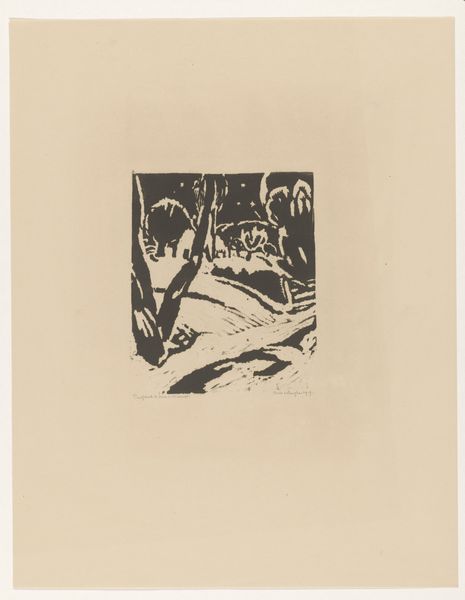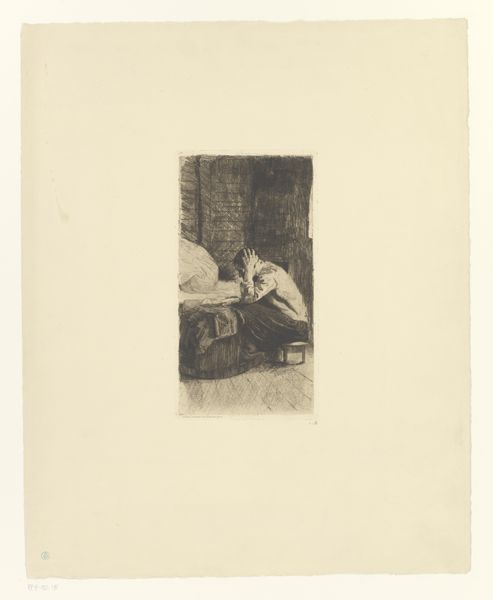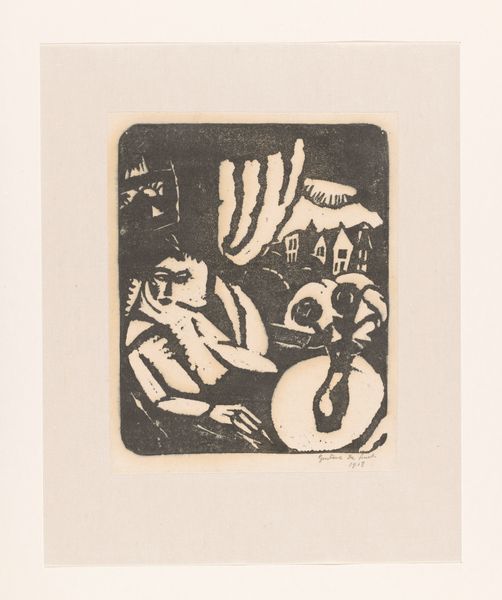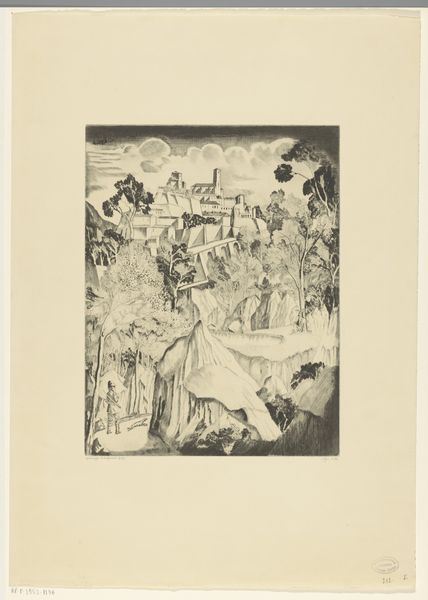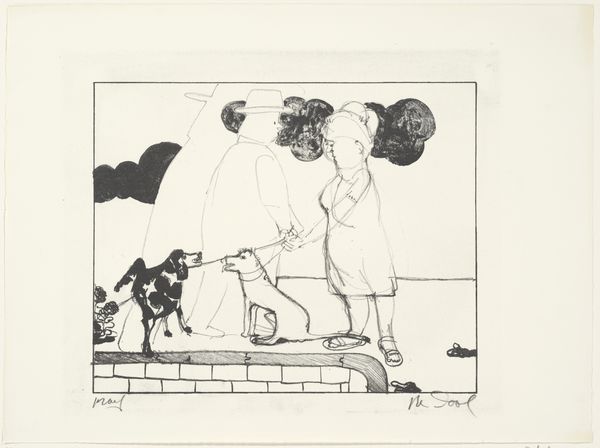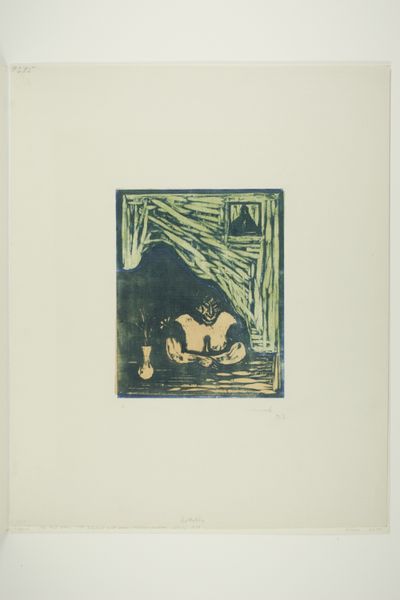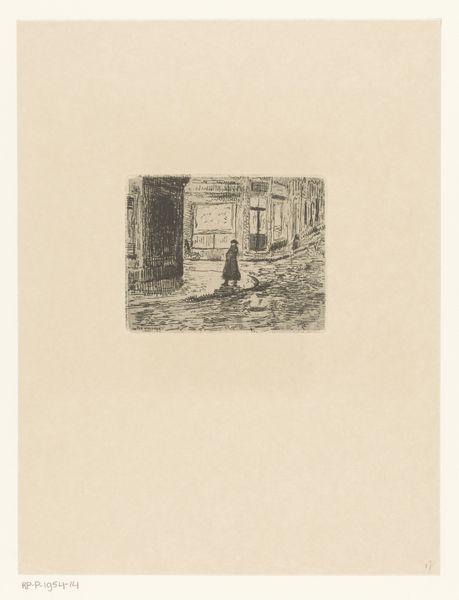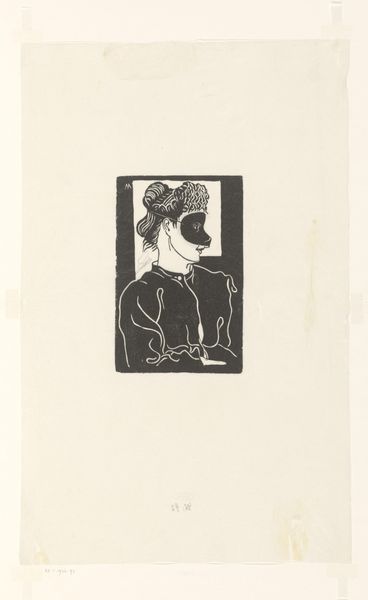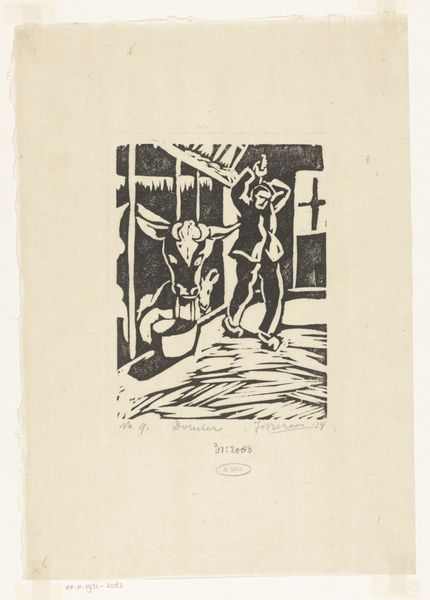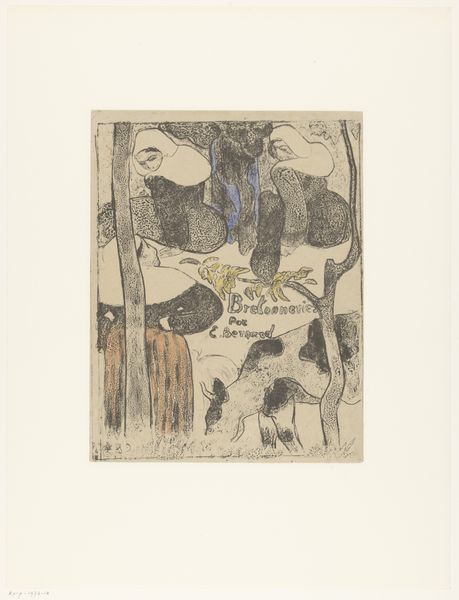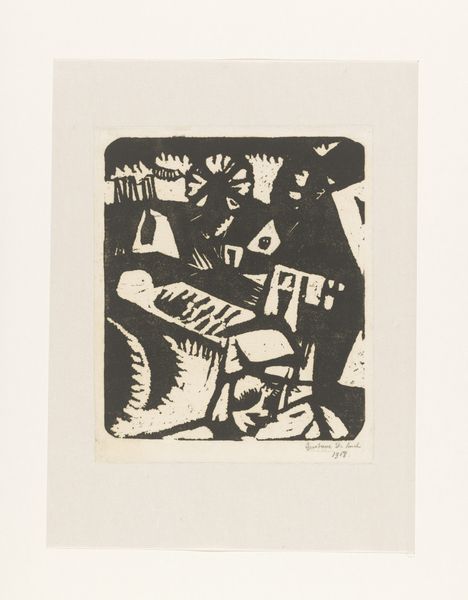
drawing, print, etching, ink
#
drawing
#
narrative-art
# print
#
impressionism
#
pen illustration
#
etching
#
landscape
#
figuration
#
ink
#
linocut print
#
genre-painting
#
post-impressionism
Dimensions: 6 3/8 x 8 1/2 in. (16.19 x 21.59 cm) (image)19 5/8 x 14 in. (49.8 x 35.6 cm) (sheet)23 3/4 × 19 5/8 × 1 1/8 in. (60.33 × 49.85 × 2.86 cm) (outer frame)
Copyright: Public Domain
Curator: Gauguin’s “Breton Women Beside a Fence,” dating back to 1889 and currently residing here at the Minneapolis Institute of Art, immediately pulls you into a world both familiar and slightly… off-kilter, doesn't it? Editor: Off-kilter is right. It’s like a dream I almost remember. Stark blacks and whites, everything feels a little haunted. They’re peering beyond, like the scene might break open, and the landscape will slip out and smudge on the horizon like the end of summer. Curator: Gauguin’s artistic exploration was deeply rooted in his perception of Brittany, France, at the time, so looking at that location itself provides meaningful insights. Consider the representation of women from the area. In many respects, we can explore through the illustration the lives, experiences, and representation of Breton women at the end of the 19th century. Editor: Absolutely, there’s a gravity in the women that pulls your attention. They command the composition. Still, for me, the lack of color amplifies the scene's rawness; the deliberate use of the etching technique and pen and ink medium conveys a powerful visual. Curator: And what do you feel is Gauguin communicates with such decisions about materiality? Editor: He understood that there’s emotion baked right into materials, a deliberate simplification to express something almost primal. A narrative reduced to its essence, wouldn’t you agree? The raw materials, you know. Curator: Yes, it offers a glimpse into Gauguin's state of mind too, right when he was breaking from Impressionism, towards what became known as post-impressionism. It is this pivotal moment, caught in stark lines. Considering his later years, his struggles with coloniality and ideas of primitivism also inform his style. Editor: I’m taken by how immediate and elemental it all is, those few elements: a fence, two women and land, rendered in strokes. As you mentioned, his life journey of struggling to belong comes up as well, the longing to discover that thing beyond what the known sees and what the others expect. Curator: Exactly! It underscores art’s continuous role in reflecting and critiquing power dynamics across time and geographical space. Editor: Yes, but maybe for today let’s just hold onto its simple feeling and mystery.
Comments
No comments
Be the first to comment and join the conversation on the ultimate creative platform.
